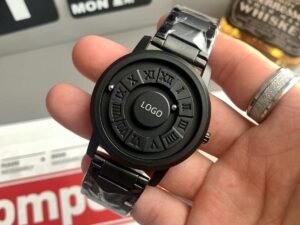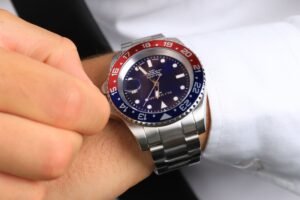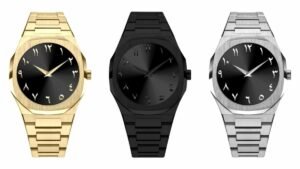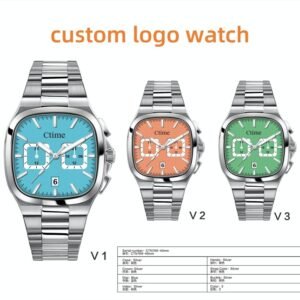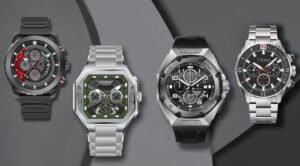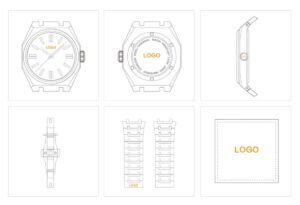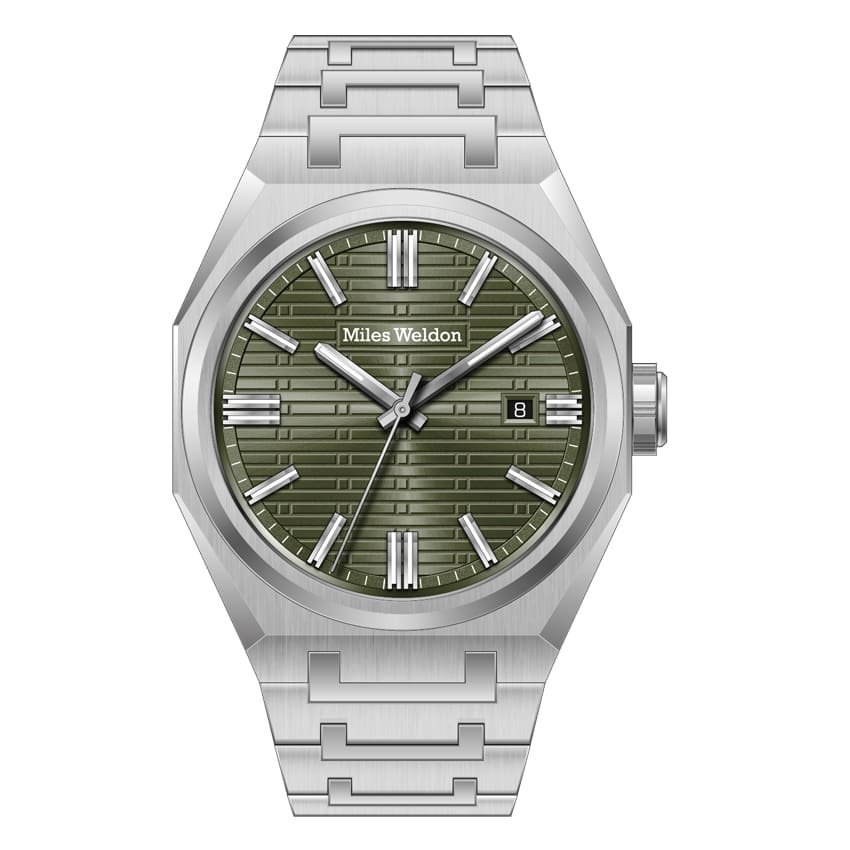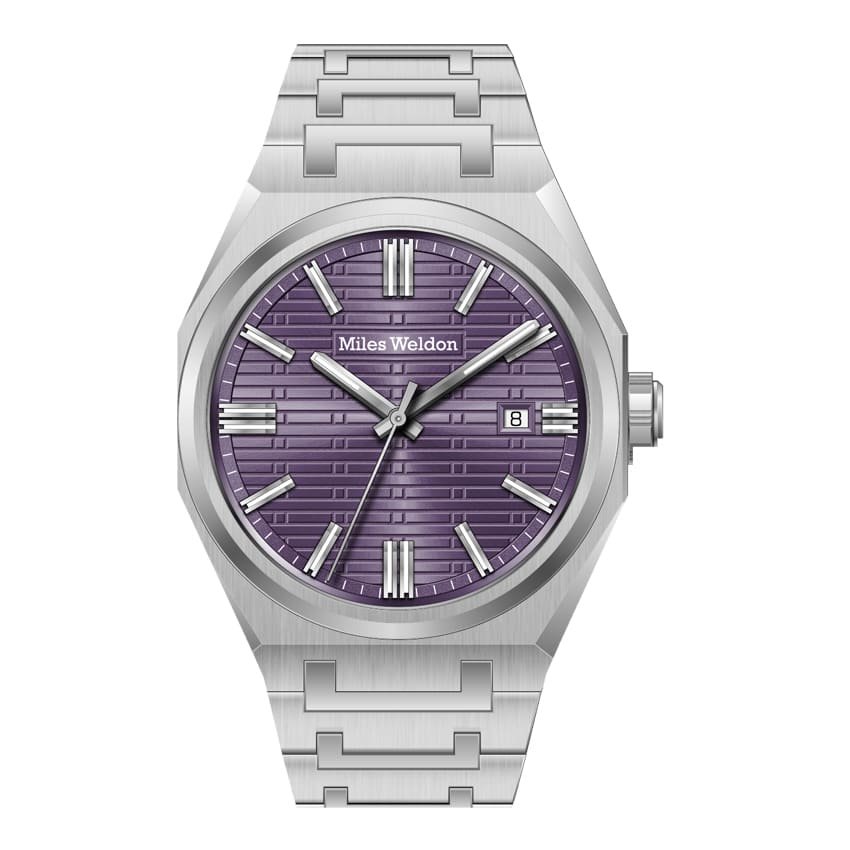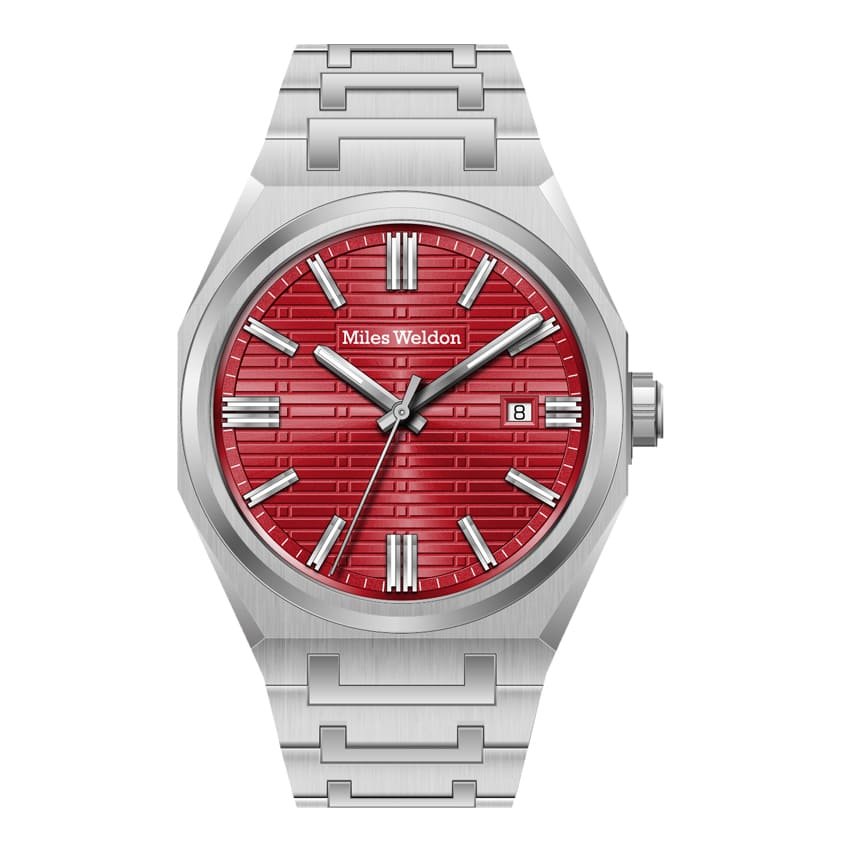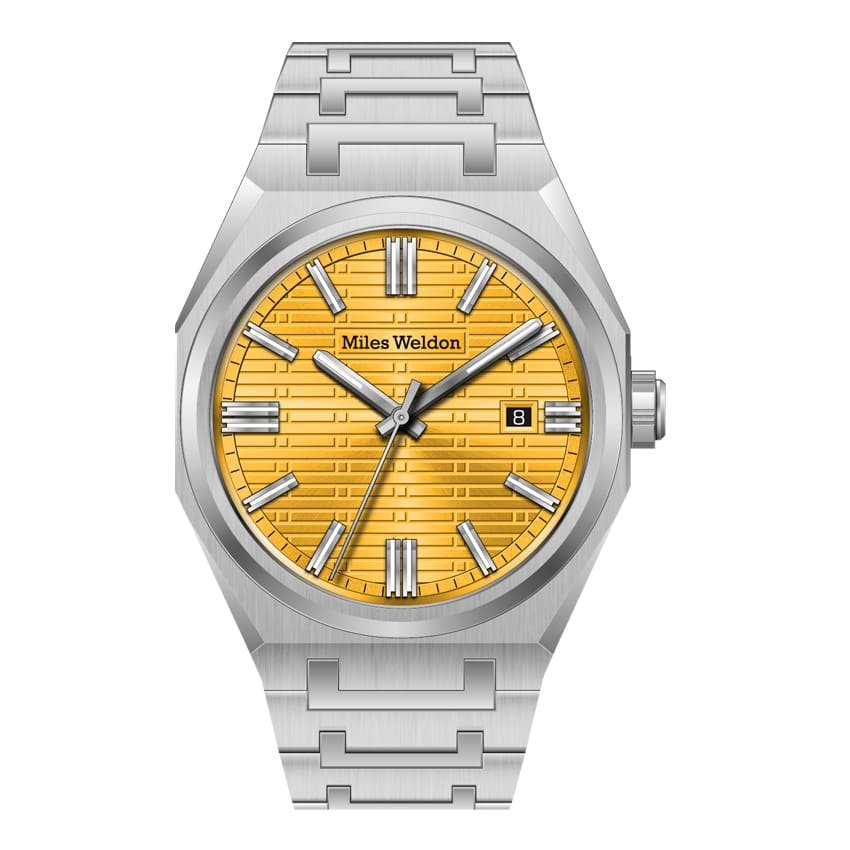In a world where time seems to slip through our fingers, there is an art form that captivates our attention and reminds us of the beauty in every passing second.
Welcome to the intricate world of watch design, where craftsmanship and creativity collide to create timepieces that are both functional and aesthetically stunning.
From the elegant curves and intricate movements to the meticulous attention to detail, every aspect of watch design is a testament to the dedication and skill of the artisans behind it.
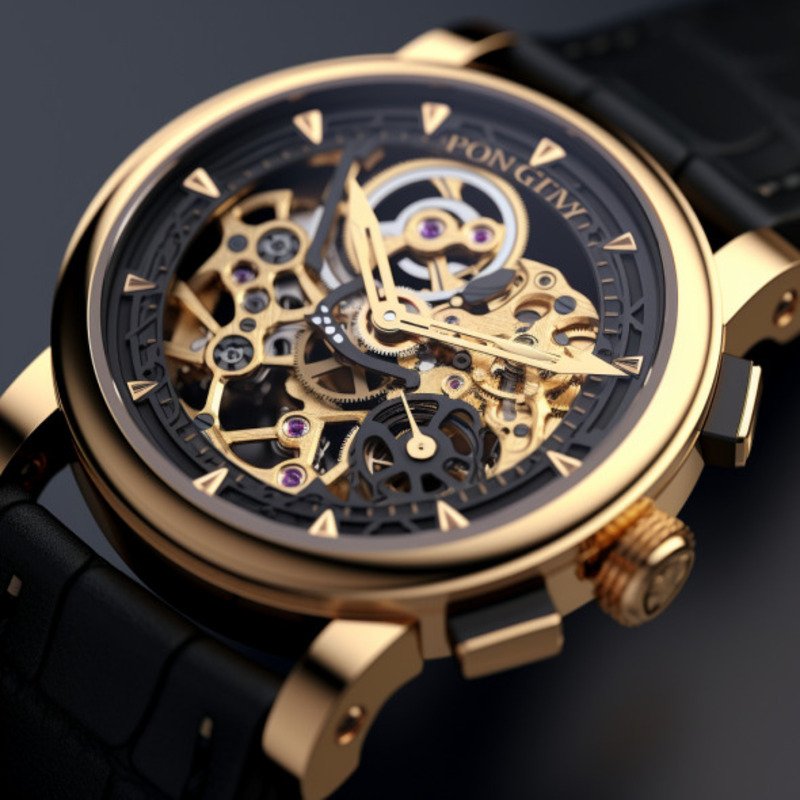
Join us on a journey as we delve into the fascinating world of watch design, exploring the history, innovation, and timeless elegance that make these timepieces not just a tool for measuring time, but a work of art that stands the test of time.
Whether you’re a seasoned watch enthusiast or simply curious about the magic behind these wrist-bound wonders, prepare to be swept away by the artistry and craftsmanship that lies within every tick and tock.
The History and Evolution of Watch Design
Watch design has come a long way since its inception centuries ago.
The first portable timepieces were developed in the 16th century, and they were primarily worn as accessories by wealthy individuals.
These early watches were often bulky and heavy, with simple designs that focused on functionality rather than aesthetics.
However, as the demand for timekeeping devices grew, so did the need for more refined and elegant designs.
In the 18th and 19th centuries, watch design underwent a significant transformation.
Master watchmakers began to focus on creating intricate movements, incorporating complications such as chronographs, moon phases, and perpetual calendars.
These advancements not only improved the accuracy of timekeeping but also added a touch of sophistication to the overall design.
Watchmakers like Abraham-Louis Breguet and Patek Philippe became renowned for their technical innovations and exquisite designs, setting the stage for the golden age of watch design.
The Importance of Watch Design in the Luxury Industry
In the luxury industry, watch design plays a crucial role in defining a brand’s identity and positioning in the market.
A well-designed timepiece is not just a tool for measuring time; it is a statement of status, taste, and personal style.
Luxury watch brands invest significant resources in creating unique and iconic designs that appeal to discerning customers.
From the choice of materials to the attention to detail, every aspect of watch design is meticulously considered to create a product that exudes luxury and exclusivity.
The design of a luxury watch goes beyond aesthetics; it reflects the brand’s heritage, values, and craftsmanship.
A watch with a rich history and a unique design language can evoke emotions and create a sense of connection with the wearer.
Whether it’s the iconic Royal Oak by Audemars Piguet or the timeless elegance of a Rolex Submariner, these designs have become synonymous with luxury and have stood the test of time.
Key Elements of Watch Design – Case, Dial, Hands, and Movement
When it comes to watch design, several key elements come together to create a harmonious and visually appealing timepiece.
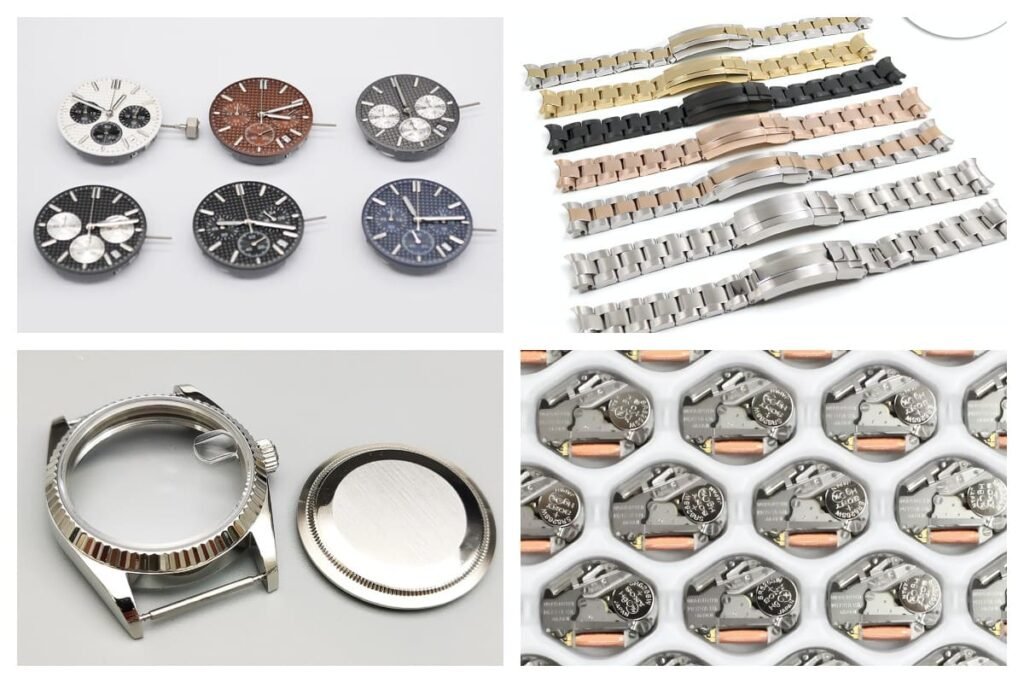
The case is the outer shell that houses the movement and protects it from external elements. It can vary in shape, size, and material, ranging from the classic round case to more avant-garde designs.
The choice of material, such as stainless steel, gold, or ceramic, can significantly impact the overall look and feel of the watch.
The dial is the face of the watch, where time is displayed.
It can be simple and minimalist or adorned with intricate details and complications.
The design of the dial often reflects the brand’s identity and can feature elements like logo, numerals, hour markers, or unique patterns.
The hands of the watch, usually made of metal, sweep across the dial, indicating the time.
They can be shaped in various styles, from traditional sword hands to more contemporary designs.
Behind the dial lies the heart of the watches – the movement.
Often referred to as the “engine” of the watch, the movement is responsible for the accurate measurement of time.
It can be mechanical, powered by a complex system of gears and springs, or quartz, driven by a battery.
The movement is not only a functional component but also a work of art in itself. Watchmakers meticulously assemble and decorate the movement, showcasing their craftsmanship and attention to detail.
Famous Watch Designers and Their Contributions
Throughout history, several watch designers have left an indelible mark on the world of watch design.
Their innovative ideas and unique perspectives have shaped the industry and continue to inspire future generations of watchmakers.
One such designer is Gerald Genta, who is renowned for his iconic designs, including the Audemars Piguet Royal Oak and the Patek Philippe Nautilus.
These watches, characterized by their distinctive octagonal shape and integrated bracelet, revolutionized the industry and set new standards for luxury sports watches.
Another influential designer is Max Bill, a Swiss architect and artist who collaborated with Junghans to create a series of minimalist and Bauhaus-inspired watches.
His designs, characterized by clean lines and simple aesthetics, have become timeless classics, admired for their understated elegance.
Other notable designers include Giorgio Galli, who has worked with brands like Timex and Swatch to create innovative and accessible designs, and Philippe Dufour, a master watchmaker known for his intricate and handcrafted timepieces.
Trends and Innovations in Watch Design
Watch design, like any other form of art, is subject to trends and innovations that shape the industry.
In recent years, there has been a resurgence of vintage-inspired designs, with brands drawing inspiration from their archives to create timepieces that pay homage to their heritage.
These watches often feature classic details such as domed crystals, retro-style dials, and vintage-inspired typography.
Another trend that has gained popularity is the use of unconventional materials in watch design.
Brands are experimenting with materials like carbon fiber, ceramic, and titanium to create lightweight and durable timepieces.
These materials not only offer functional benefits, but also add a modern and avant-garde touch to the design.
In terms of innovation, technology has played a significant role in pushing the boundaries of watch design.
The integration of smart features, such as fitness tracking and notifications, has transformed traditional watches into connected devices.
Hybrid watches, which combine traditional watchmaking with smart features, have also gained traction, offering a seamless blend of classic design and modern functionality.
The Impact of Technology on Watch Design
Technology has had a profound impact on watch design, both in terms of aesthetics and functionality.
With the advent of computer-aided design (CAD) software and 3D printing, watch designers now have the tools to create and visualize their ideas with greater precision.

This has led to more complex and avant-garde designs that were previously unimaginable.
On the functional side, advancements in materials and watch manufacturing techniques have made watches more robust, accurate, and water-resistant.
High-tech materials like ceramic and carbon fiber offer superior durability and scratch resistance, while advancements in movement technology have improved accuracy and power reserve.
However, technology also presents challenges for traditional watchmakers.
The rise of smartwatches and the increasing popularity of digital timekeeping have disrupted the industry, forcing traditional watch brands to adapt and evolve.
While smartwatches offer convenience and functionality, they lack the craftsmanship and emotional connection that traditional mechanical watches provide.
As a result, many luxury watch brands have embraced technology while staying true to their heritage, creating hybrid watches that combine the best of both worlds.
Customization and Personalization in Watch Design
In an age where personalization is highly valued, watch brands have started to offer customization options that allow customers to create a timepiece that reflects their individual style and preferences.
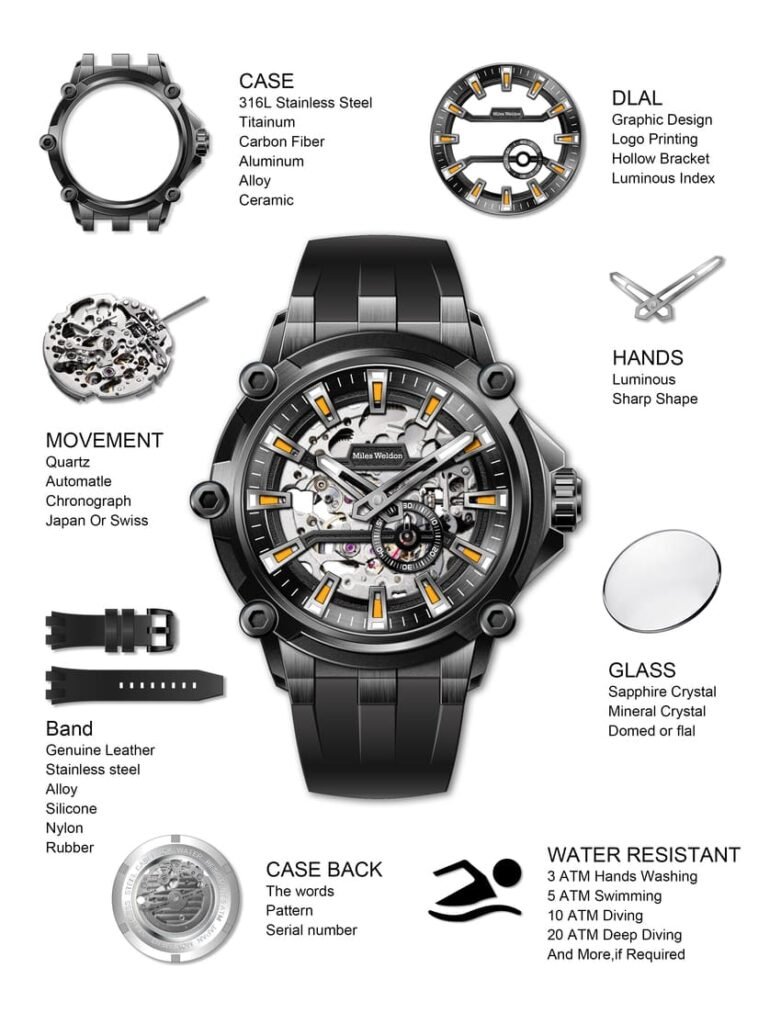
From choosing the case material and dial color to selecting personalized engravings and straps, customers can now create a truly unique and one-of-a-kind watch.
Customization not only allows customers to express their personality, but also creates a deeper emotional connection with the watch.
A personalized watch becomes a symbol of individuality and a cherished memento that can be passed down through generations.
Brands like Rolex and Omega offer customization services, allowing customers to create their own bespoke timepieces that are tailored to their taste and lifestyle.
The Role of Materials in Watch Design
The choice of materials in watch design is crucial, as it not only affects the aesthetics but also the durability and functionality of the timepiece.
Traditional materials like stainless steel, gold, and leather continue to be popular choices, known for their timeless appeal and luxurious feel.
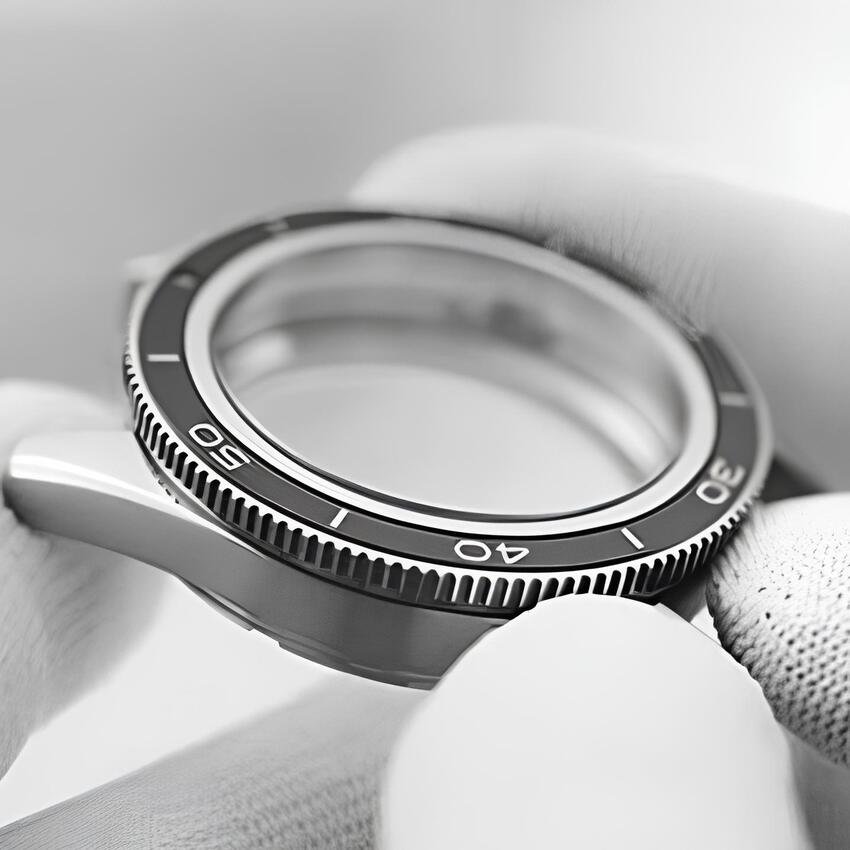
However, watch brands are increasingly exploring unconventional materials that offer unique properties and design possibilities.
For instance, ceramic has gained popularity for its scratch-resistant properties and ability to retain its color and shine over time.

Carbon fiber, known for its lightweight and high-strength characteristics, is often used in sports watches to enhance durability and performance.

Titanium, another lightweight material, offers exceptional strength and corrosion resistance, making it an ideal choice for diving watches.
The use of exotic materials like meteorite, mother-of-pearl, and even fragments of the moon has also become a trend in luxury watch design.
These materials not only add a touch of exclusivity, but also create a connection to the natural world, making each watch unique and special.
The Future of Watch Design
As technology continues to advance and consumer preferences evolve, the future of watch design holds exciting possibilities.
One area of innovation is in sustainable watchmaking, with brands exploring eco-friendly materials and manufacturing processes.
Recycling and upcycling of materials, as well as the use of renewable energy, are becoming key considerations for watch brands looking to reduce their environmental impact.
Another trend that is likely to shape the future of watch design is the integration of augmented reality (AR) and virtual reality (VR) technologies.
These technologies have the potential to revolutionize the way watches are designed, allowing customers to visualize and experience their chosen timepiece in a virtual environment before making a purchase.
This would enable brands to offer a more immersive and personalized shopping experience, bridging the gap between online and offline retail.
Conclusion
In the intricate world of watch design, craftsmanship and creativity intertwine to create timepieces that transcend their functional purpose.
From the historical evolution and importance of the luxury industry to the key elements of design and the impact of technology, every aspect of watch design is a testament to the dedication and skill of the artisans behind it.
As trends and innovations continue to shape the industry, watch design will evolve, but the timeless elegance and artistry that make these timepieces special will always remain.
So, whether you’re a seasoned watch enthusiast or simply curious about the magic behind these wrist-bound wonders, take a moment to appreciate the artistry and craftsmanship that lies within every tick and tock.

